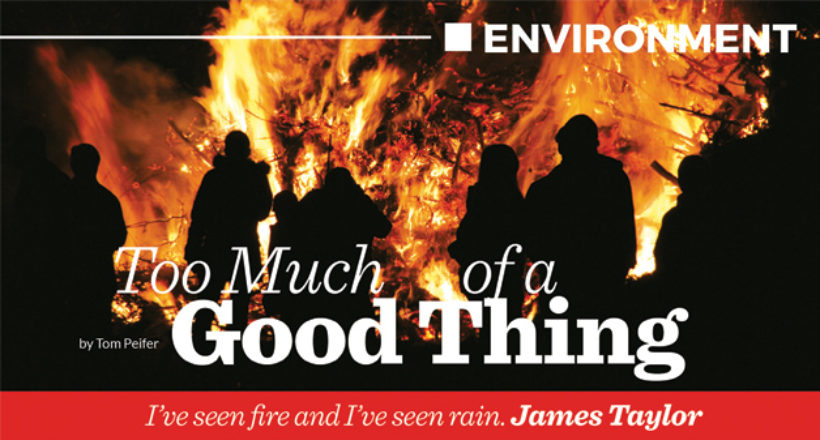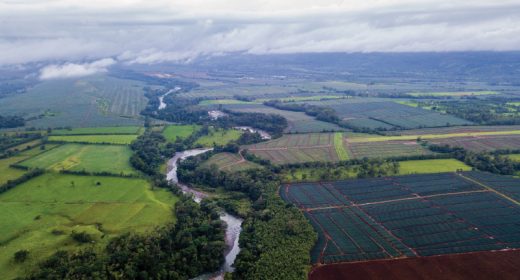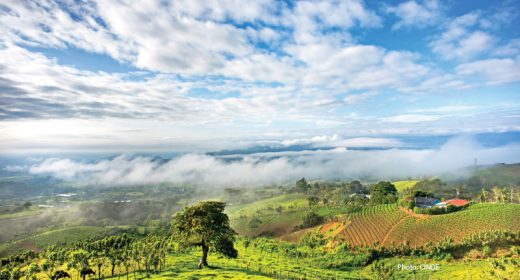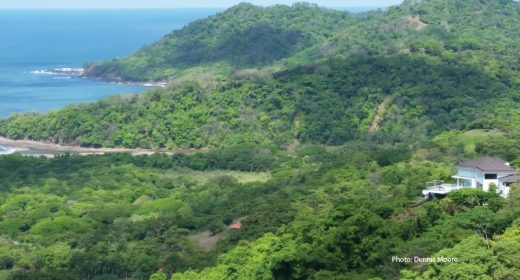
Environment: Too Much of a Good Thing
- MAR 01, 2017Warning: count(): Parameter must be an array or an object that implements Countable in /home/howlermag/public_html/old/wp-content/themes/new-paper/includes/general.php on line 193

Your Lead Paragrpah goes here
I’ve seen fire and I’ve seen rain. James Taylor
My first night in Guanacaste: love at first sight. The uncluttered view of the star-filled heavens and the sultry summer breezes touched a kind of primal chord. The warm offshore winds rekindled memories of my youth in Southern California. There, the Santa Ana winds surged down out of the high desert, across the plains, and swept the dreary summer weather pattern of ‘late night and early morning low clouds and fog’ into oblivion. And yes, we also got some great surf.
In my case, that first week of offshore winds in Guanacaste helped to clinch the deal on buying land, settling down and sinking roots. After all these years, the night airs still waft the fragrance of the nearby forest through the open window and still provide a source of sensory pleasure. But, there are times when it’s like, OK, enough already.
In the present case I’m scrambling to write now that the electricity is back after a series of wind-related power outages, telephone snafus and assorted irrigation disasters. (Some people insist that things come in threes, but to say that when it rains it pours is the wrong metaphor for these dog days of the dry season.)
As it turns out, there’s a wind advisory in effect due to a cold front jammed up against the Caribbean Coast. It’s windy and drizzling in San Jose. The only drizzle in my neck of the woods is downwind from my irrigation system, much to the chagrin of the wind- and sun-stressed plants. Let’s face it: For gardeners and growers the high winds are a major nuisance and a pain in the neck, but for others the prevailing conditions portend more serious threats.
Last year, after several years of drought, a few months of summer breezes turned the hills all over Guanacaste into an explosive mix of dead trees and tinder dry undergrowth. In our valley south of Tamarindo, the long ridge from 27 de Abril to the hills behind Playa Negra and Avellanes played host to a fire that lasted for weeks. It was like watching the Wehrmacht marching its way westward, chewing up new territory on a daily basis.
Extreme weather pays heed to the laws of physics and thermodynamics and is wont to make short shrift of the best-laid plans of mice and men. One neighbor bulldozed what he thought would be a Maginot line of defense to protect his domain from flames but the wind whipped embers floated effortlessly above and far beyond his line in the sand and torched hundreds more hectares of forest covered hills.
One doesn’t need to believe in nor deny the science of climate change. Like Sargent Friday used to say, “The facts ma’am, just the facts.” Worldwide the hard data on extreme weather could not be more crystal clear. Fires up, both in area, intensity and frequency. Droughts, ditto, the former often following on the heels of the latter. Flooding and increased intensity of thunderstorms are both way up even in Europe where drizzle used to be more the norm than tropical downpours.
We’ve seen the wild swings of an increasingly chaotic climate right here on our home turf, from drought to fire to the first Tico hurricane that calmly waltzed across the country, sparing most of us near the coast while wreaking havoc in the hills and valleys further inland. As an article in La Nación pointed out, the hillside forests are key to buffering the effects of extreme rainfall. Consider that a word to the wise. This time of year, preventing the onslaught of fires is top priority for all of us.









